
Ludwigshafen, officially Ludwigshafen am Rhein, is a city in the German state of Rhineland-Palatinate, on the river Rhine, opposite Mannheim. With Mannheim, Heidelberg, and the surrounding region, it forms the Rhine Neckar Area.

BASF SE, an initialism of its original name Badische Anilin- und Sodafabrik, is a European multinational company and the largest chemical producer in the world. Its headquarters are located in Ludwigshafen, Germany.

The Kassel World War II bombings were a set of Allied strategic bombing attacks which took place from February 1942 to March 1945. In a single deadliest raid on 22–23 October 1943, 150,000 inhabitants were bombed-out, at least 6,000 people died, the vast majority of the city center was destroyed, and the fire of the most severe air raid burned for seven days. The US First Army captured Kassel on 3 April 1945, where only 50,000 inhabitants remained, versus 236,000 in 1939.

Synthetic fuel or synfuel is a liquid fuel, or sometimes gaseous fuel, obtained from syngas, a mixture of carbon monoxide and hydrogen, in which the syngas was derived from gasification of solid feedstocks such as coal or biomass or by reforming of natural gas.
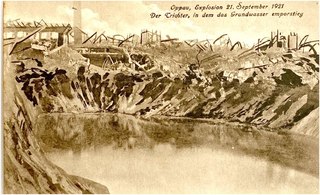
The Oppau explosion occurred on September 21, 1921, when approximately 4,500 metric tons of a mixture of ammonium sulfate and ammonium nitrate fertilizer stored in a tower silo exploded at a BASF plant in Oppau, now part of Ludwigshafen, Germany, killing 500–600 people and injuring about 2,000 more.
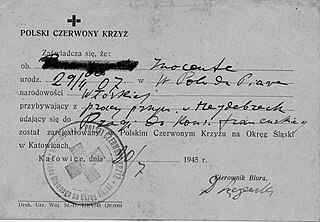
Heydebreck was a Nazi Germany village area with POW camps Arbeitskommando E711A and Bau und Arbeits camp 20. Five km west in the Cosel district was a subcamp of Auschwitz III (Monowitz) operated from April 1, 1944 to January 26, 1945. In February and March 1944, 800 POWs from Monowitz Arbeitskommando E715 were transferred to chemical facilities in the area of Blechhammer, Cosel, and Heydebreck.

The Bucharest World War II bombings were primarily Allied bombings of railroad targets and those of the Oil Campaign of World War II, but included a bombing by Nazi Germany after the 1944 coup d'état. Bucharest stored and distributed much of Ploiești's refined oil products.

The National Petrochemical Company (NPC), a subsidiary to the Iranian Petroleum Ministry, is owned by the government of the Islamic Republic of Iran. It is responsible for the development and operation of the country's petrochemical sector. Founded in 1964, NPC began its activities by operating a small fertilizer plant in Shiraz. Today, NPC is the second largest producer and exporter of petrochemicals in the Middle East. Over these years, it has not only expanded the range and volume of its products, but it has also taken steps in areas such as R&D to achieve more self-sufficiency.
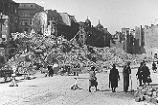
The city of Vienna in Austria was bombed 52 times during World War II, and 37,000 houses of the city were lost, 20% of the entire city. Only 41 civilian vehicles survived the raids, and more than 3,000 bomb craters were counted.

Iran has the fourth largest oil reserves and the 2nd largest natural gas reserves in the world. The nation is a member of OPEC, and generates approximately 50% of state revenue through oil exports.
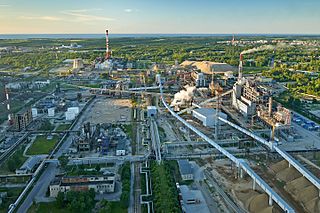
The oil shale industry is an industry of mining and processing of oil shale—a fine-grained sedimentary rock, containing significant amounts of kerogen, from which liquid hydrocarbons can be manufactured. The industry has developed in Brazil, China, Estonia and to some extent in Germany and Russia. Several other countries are currently conducting research on their oil shale reserves and production methods to improve efficiency and recovery. Estonia accounted for about 70% of the world's oil shale production in a study published in 2005.

The Allied oil campaign of World War II pitted the RAF and the USAAF against facilities supplying Nazi Germany with petroleum, oil, and lubrication (POL) products. It formed part of the immense Allied strategic bombing effort during the war. The targets in Germany and in Axis-controlled Europe included refineries, synthetic-fuel factories, storage depots and other POL-infrastructure.
Allied bombing of the oil campaign targets of World War II included attacks on Nazi Germany oil refineries, synthetic oil plants, storage depots, and other chemical works. Natural oil was available in Northwestern Germany at Nienhagen, Rietberg (20%—300,000), and Heide (300,000) and refineries were mainly at Hamburg and Hannover. Refineries in France, Holland, and Italy (54)—mainly coastal plants for ocean-shipped crude—were within Allied bombing range and generally unused by Germany. Even before the war, Germany was dependent on foreign sources for an adequate supply of oil. The annexations of Austria and the Sudetenland ; the "campaigns in Norway, Holland, Belgium, and France…and imports from the Soviet Union provided significant wartime POL imports to Nazi Germany. Firms that operated oil facilities included Deutsche Erdöl-Aktiengesellschaft, Brabag, Fanto, and I.G. Farbenindustrie.
The oil campaign chronology of World War II lists bombing missions and related events regarding the petroleum/oil/lubrication (POL) facilities that supplied Nazi Germany or those Germany tried to capture in Operation Edelweiss.

The Blechhammer area was the location of Nazi Germany chemical plants, prisoner of war (POW) camps, and forced labor camps. Labor camp prisoners began arriving as early as June 17, 1942, and in July 1944, 400–500 men were transferred from the Terezin family camp to Blechhammer. The mobile "pocket furnace" crematorium was at Sławięcice.) and Bau und Arbeits Battalion 21 was a mile from the Blechhammer oil plants and was not far from Kattowitz and Breslau. Blechhammer synthetic oil production began April 1, 1944 with 4000 prisoners, with the slave labor camp holding these prisoners during April 1944, becoming a satellite camp of the dreaded Auschwitz extermination camp, as Arbeitslager Blechhammer.
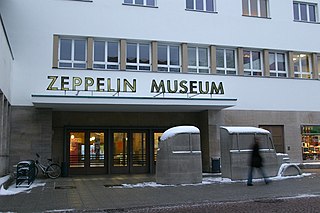
The German city of Friedrichshafen was bombed during World War II as part of the Allied strategic bombing campaign against German war materiel industry, particularly in the targeting of German fighter aircraft production and long range missile development.

V-2 rocket facilities were military installations associated with Nazi Germany's V-2 SRBM ballistic missile, including bunkers and small launch pads which were never operationally used.
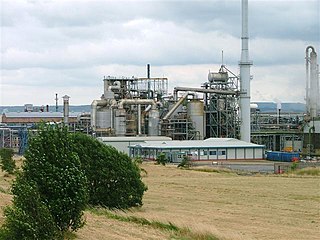
The Billingham Manufacturing Plant is a large chemical works based in the Borough of Stockton-on-Tees, England. In agricultural terms, it is one of the most important factories in Britain.
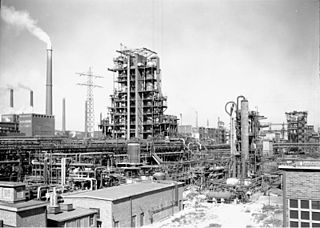
The Leuna works in Leuna, Saxony-Anhalt, is one of the biggest chemical industrial complexes in Germany. The site, now owned jointly by companies such as TotalEnergies, BASF, Linde plc, and DOMO Group, covers 13 km2 and produces a very wide range of chemicals and plastics.
















